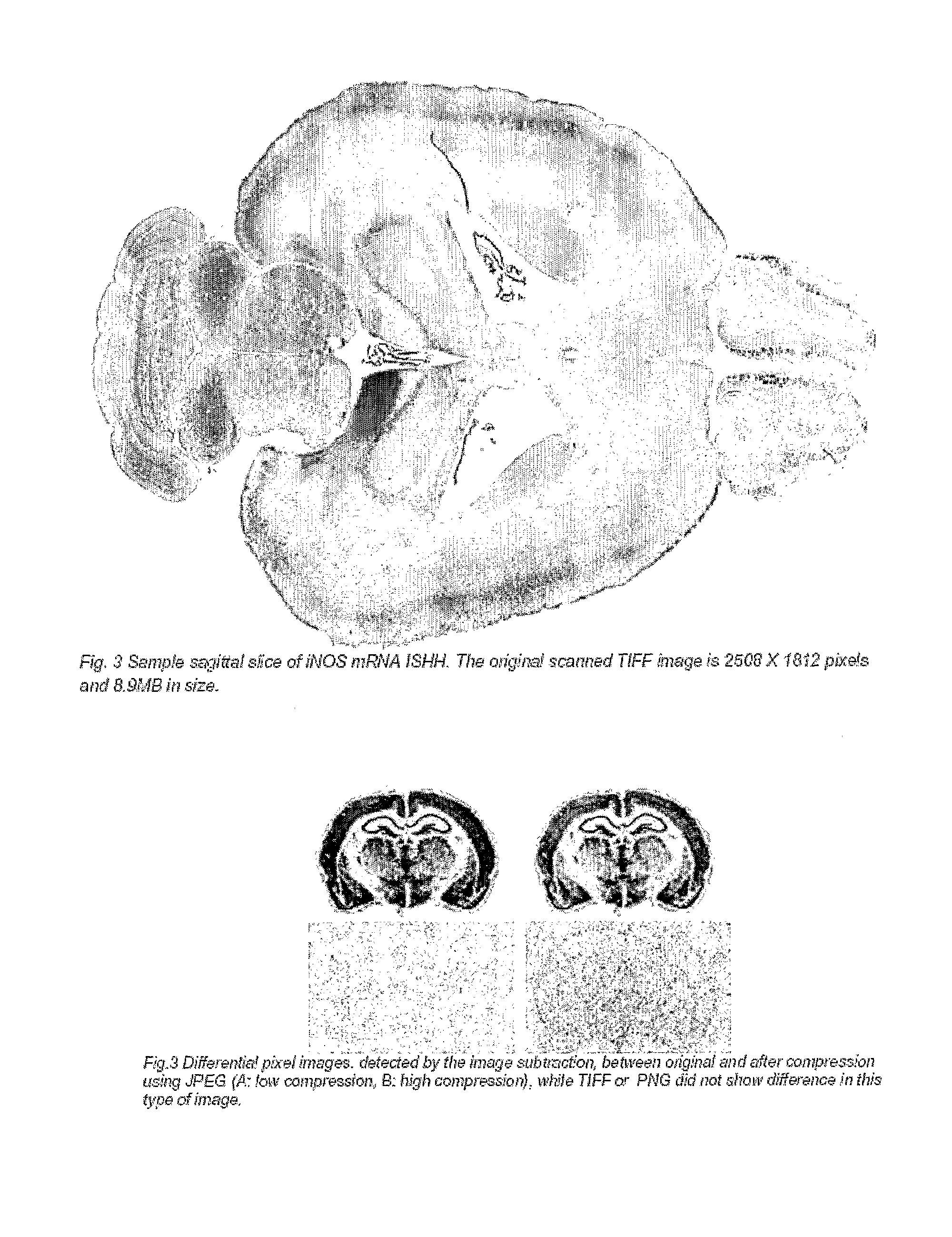Interactive Multiple Gene Expression Map System
a gene expression map and multiple technology, applied in the field of interactive multiple gene expression map system, can solve the problems of not real-time manipulation of 3d data set in the browser, internet traffic speed and scripting, and are far behind the commercial packages available in cd format, so as to facilitate the comparison of multiples, edit and update easily
- Summary
- Abstract
- Description
- Claims
- Application Information
AI Technical Summary
Benefits of technology
Problems solved by technology
Method used
Image
Examples
example 1
In-situ Hybridization Histochemistry
[0027]The demands for measurement of gene expression and publications using RT-PCR have been increasing dramatically (FIG. 1). The in-situ technique of gene hybridizationhistochemistry (ISHH) was introduced in 1983 and exponentially increased up to 1992, but after that the number of publication using ISHH has decreased. This may be because ISHH is a time and labor consuming experiment and difficult to perform in a quantitative way.
[0028]Since the brain is heterogeneous tissue and populations of brain cells are variable in each area of the brain, gene expression analysis using brain homogenate, such as RTPCR or gene array, may not be an accurate or effective way to investigate gene expression in the brain. For example, if we detect increases of certain gene expression in homogenate preparation, there are several possibilities occurring. The number of particular types of cells expressing the gene may be increased, gene expression in the same number ...
example 2
Tape-Transfer System
[0030]In order to eliminate damages to the brain slices during the ISHH process which introduces distortion, the inventors employed a new technique (CryoJane Tape-Transfer system, Instrumedics Inc., NJ), which allows the transfer of the cryostat sections to the slide glass without any damage. The tape transfer system enables the user to prepare frozen sections of paraffin-quality, as thin as 2 microns, wrinkle-free, uncompressed, fully intact and tightly bonded to the microscope slide. In the tape transfer process, sections are cut, transferred and tightly bonded to the microscope slide without ever being permitted to melt. Slow freezing of the tissue or brain produces large ice-crystals, which damage insoluble structural elements and cause displacement of water-soluble components. In the tape transfer process the tissue is snap-frozen to minimize ice crystal size. The frozen section is captured on the cold tape window, as it is being cut and is then transferred ...
example 3
Interactive Multiple 2D Gene Expression Maps from the Gene Expression Data
[0032]An image database was constructed capable of efficient storage, retrieval, presentation, manipulation and analysis of gene expression 2D image data. The gene expression 2D image data consists of ISHH experimental data from coronal brain sections and sagittal and horizontal data re-sliced from reconstructed 3D data sets.
[0033]Reconstruction is the abstract “rebuilding” of something that has been torn apart, a big part of reconstruction is then being able to view, or visualize, all the data once it's been put back together again. The 2D image data obtained from ISHH should be put back together to recreate how the brain looked before we sectioned it, we must put all the images of all these slices back together again, just as if we were putting the real slices of tissue back together again. Since all of these planes must be stacked back together to obtain the complete picture of what the tissue was. Initiall...
PUM
 Login to View More
Login to View More Abstract
Description
Claims
Application Information
 Login to View More
Login to View More - R&D
- Intellectual Property
- Life Sciences
- Materials
- Tech Scout
- Unparalleled Data Quality
- Higher Quality Content
- 60% Fewer Hallucinations
Browse by: Latest US Patents, China's latest patents, Technical Efficacy Thesaurus, Application Domain, Technology Topic, Popular Technical Reports.
© 2025 PatSnap. All rights reserved.Legal|Privacy policy|Modern Slavery Act Transparency Statement|Sitemap|About US| Contact US: help@patsnap.com



